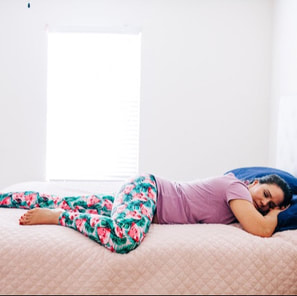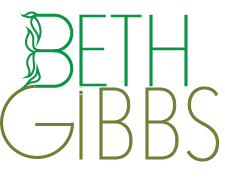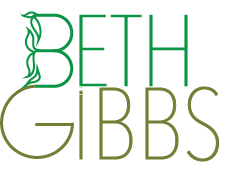ENLIGHTEN UP! a blogSelf-awareness stories: lighting our way to clarity, contentment and resilience in a complicated world.
|
 Guest Post by Monica Le Baron Can’t sleep? Create your ideal night routine to fall asleep effortlessly in just 5 easy steps Before I struggled with insomnia, and way before I became a Certified Yoga Therapist and sleep expert, I wasn’t aware of evening routines and I didn’t even think I had one. The reality is that I had a very unhealthy night schedule that was preventing me from falling asleep, staying asleep, and feeling energized in the morning. I would watch TV, read business books or study Swedish until late, making it hard to stop the chatter in my mind and to be able to fall asleep effortlessly. Sometimes, I would force myself to unplug and go to bed a couple of hours earlier than my usual schedule, but that would make it even worse, it only led to nights of tossing and turning in frustration. I researched a lot about sleep hygiene tools and read many blogs about sleep routines. Some advice seemed good yet impossible to implement in my night routine, but I would try anyway which created even more drama in my life. After many sleepless nights, I realized that I needed to create my own routine that fit my life better and to be patient and extra flexible with it. That’s one of the main reasons why I won’t try to impose a “perfect” routine on my coaching clients or on you. The goal here is for you to become aware of your evening routine (even if you don’t think you have one) and then add a level of simplicity and mindfulness to it. Let’s take the first baby step to create your simple night routine so you can fall asleep effortlessly. STEP 1: GET CLARITY To start, it is important to understand your relationship with sleep and get clear of the conscious or unconscious stressors and habits that might be preventing you from getting a good night's rest. Take a moment to reflect (and journal if possible) about the questions below. These are some of the things I talk about with my clients during our first coaching session to gain clarity about their current sleep situation and the transformation they would like to achieve.
STEP 2: SET A REALISTIC GOAL Is time to create a realistic goal for your night routine. Ask yourself how would you like your evening routine to support your sleep, your health, or your life in general. And decide how much time are you willing to invest in creating your ideal routine and executing it. Then create a goal that is measurable, simple, and realistic. Here is an example of a realistic goal. If you’re going to bed at midnight and you would like to be fully asleep two hours earlier to get deeper sleep, then a realistic goal to start with might mean being asleep by 11:50 pm instead of 10 pm. Then you can go to bed ten minutes earlier each week until you hit your 10 pm goal. I realize this might seem too simple or not worth the effort, but small steps will set you up for success. If your goal were to be asleep by 10 pm on week one, this might add more pressure and anxiety to your nights. And we don’t want that! STEP 3: WHAT NEEDS TO STAY AND WHAT NEEDS TO UPGRADE? Now that you’ve created your realistic goal, and identified your evening routine and other factors that might be disturbing your sleep, and your energy, let’s identify which parts of your night routine should stay and which parts you’ll want to upgrade. Ask yourself the following questions to decide.
Even if there is a lot that you want to change, don’t try to overwhelm yourself. Keep it simple and stick to one or two things to start which will upgrade your entire sleep experience. STEP 4: CREATE YOUR ROUTINE Using the upgrades that you’ve identified in Step 3, write down your ideal evening routine to establish a regular relaxing bedtime that helps your body recognize when it’s time to sleep. Remember Antoine de Saint-Exupéry’s wise words: “a goal without a plan is just a wish.” I use the following steps with my clients to create their night routine, and you’re welcome to use them as well:
Creating and using an evening routine may be new for you, so take your time. Don’t try to rush the process. Instead, create a simple yet specific routine and be flexible with it, especially at the starting. STEP 5: TAKE ACTION! Doesn’t matter how great your night routine is, if you don’t take action it will never work. Is like making a lavender tea and not drinking it, and expecting to get the calming results anyways. If your night routine is too complicated, rigid, or unrealistic, is going to be hard to relax and fall asleep. Use these 5 simple steps to create your ideal night routine. A routine that you look forward to at night and that signals to your body and mind that is time to rest. Remember that taking action is not always adding more activities, less is always best at night. Here’s a 10-minute yoga Nidra audio you can effortlessly add to your evening routine to peacefully fall asleep in minutes. CONCLUSION Sleep troubles don’t typically start in the bedroom; they’re just the tip of the iceberg and an indication that something else is going wrong. Not sleeping well is often caused by the things we do throughout the day, over the years, and leading up to our sleep time. Inside my Sleep Simplified 1:1 coaching program, I help my clients identify the root causes of their sleep troubles, implement effective changes, and create lasting habits that lead to better sleep. These lasting habits start by having an ideal night routine to fall asleep effortlessly at night. What upgrades you will be adding to your routine tonight? Please let me know in the comments below, I would love to know.  Monica, MBA, is a bilingual (EN/ES) sleep coach and certified yoga therapist who specializes in helping women with sleep disorders get a good night’s rest. Using her exclusive signature program, Sleep Simplified, she has helped hundreds of clients overcome insomnia, sleep apnea and more. After just one session, her clients have been able to get two extra hours of restful sleep, wake up fewer times in the middle of the night and fall asleep within minutes of their head hitting the pillow. Monica’s expertise has been featured in media outlets and apps including Insight Timer, International Association of Yoga Therapists, Brainz and more. Her passion for helping others get a good night’s rest was sparked after burning out at her corporate job and using yoga therapy techniques on herself to heal from insomnia, chronic pain, anxiety and stress. She lives in Chihuahua, Mexico, with her mother and siblings.
1 Comment
 This post explores the concept of core qualities and suggests an accessible practice to include in your everyday life. A core quality is a specific characteristic like a strength or a skill. Examples of these are balance, contentment, endurance, grounding helpfulness, resilience, and surrender. We may think that core qualities are external goals we need to work toward but they are already part of our being. Consider this line from the poem Auguries of Innocence by William Blake: “To see a world in a grain of sand...;” If we are a grain of sand, we are also a world and everything in that world, including core qualities. How we experience our lives, with its joys and sorrows, can be attributed to how deeply we recognize, embody and express this understanding. Core qualities can be expressed in positive or unhelpful ways. For instance, helpfulness without boundaries can be unhealthy, surrender without wisdom can result in a loss of self-determination, and endurance without balance may lead to exhaustion. However, when consciously realized and viewed through self-awareness, core qualities are more likely to be expressed in positive ways. Of course, this is easier said than done since the journey to true and deep self-awareness is long and often difficult but embodying core qualities we are drawn to is an effective way to experience deeper aspects of self-awareness. In this post we’ll explore the core quality of grounding. We can think of grounding in two ways. The first is grounding as a core quality or a value that connects us to all our layers of being; body, breath and mind. The second is grounding as a practice called earthing, which refers to making direct skin contact on the earth with bare feet. Now it’s not always possible to stand on the ground with bare feet – think winter – Brrr! Or due to a health condition or disability this practice may not be accessible. Thankfully, there are other ways to experience the direct benefits of grounding, which help you:
To successfully ground and connect with ourselves we first need to inhabit our bodies – no matter their condition or ability. Feeling at home and relaxed in your body can be an indication that you are grounded. However, many of us may not feel at home in our own skin because:
Here’s a personal story. While recovering from an emergency hysterectomy, I had trouble feeling and being ‘in’ my lower body. I lost touch with it. It was there, it functioned and was fully operational with the exception of my missing uterus and ovaries but I couldn’t ‘feel’ it. On the suggestion of my naturopathic doctor, I made an appointment to see an acupuncturist. Instead of inserting needles, he hooked me up to a computer with a series of sensors. The printout and his explanation stunned me. He explained that the surgeon had expertly sewed my physical body back together but my energy body was misaligned and that was why I couldn’t ‘feel’ my lower half. The graph showed this clearly even as my rational mind told me BS and ‘no way.’ Then he inserted needles all over my body (upper and lower) and left me to rest on his table for 20 minutes. During that time, I experienced fits of giggles and laughter at nothing in particular. After 20 minutes, he came back, removed the needles and hooked me up to the computer again. This time the graph showed alignment between top and bottom, and I was able to ‘feel’ and fully inhabit my lower body for the first time since the operation. Wow! was all I could think as I drove home. There are many ways to integrate the quality and practice of grounding into our lives in spite of mental/emotional struggles or physical limitations. Research suggests that practicing visualization promotes relaxation, enhances sleep, reduces pain, and increases creativity. As a grounding practice, visualization can increase feelings of safety, security, and connection to self. The Roots Visualization is my favorite practice for grounding. I learned it many years ago from a teacher during my 200-hour yoga training. I still use it to ‘stand my ground’ in stressful situations instead of giving in to my first impulse to flee or freeze. I also practice it when I’m feeling spacey and distracted and need to focus. If parts of your body are missing due to amputation, or removal by surgery, it is important to know that the missing parts are often experienced energetically and this should not prevent anyone from experiencing the benefits of grounding through the practice of visualization. If you need confirmation of this phenomenon, read Matthew Sanford’s book, Waking, a Memoir of Trauma and Transcendence. Matthew is a yoga teacher who was paralyzed from the waist down as the result of a tragic automobile accident when he was 13 years old. Roots Visualization, Instructions 1. If appropriate and accessible, take off your shoes, connect your bare feet to the ground and close your eyes. 2. If you find yourself in a situation, place, or time where you cannot take off your shoes or close your eyes, direct your attention to your legs and feet to sense a deeper contact to the earth, floor, or wheelchair footrests beneath you. 3. Begin to visualize roots growing from your body, starting from the base of the spine. Feel roots reaching down through your legs through the bottoms of your feet to pierce through the earth’s crust. 4. Visualize your roots branching and spreading, growing stronger and reaching deeper into the earth. Sense the strength, support, and the stability that your branching roots send back to fill your entire body. 5. With each inhale, begin to draw in strength, support, and stability and allow that feeling to deepen your connection to the physical world and your place in it. 6. Draw the quality of grounding through the bones of your feet and legs to the base of your spine and all the way up to the crown of your head. Feel your entire body safe, secure, stable and connected to the physical world allowing you to stand your ground and speak your truth. As you do this you may feel some tingling or pulsing in your feet and legs. That’s a good thing because energy flows where intention goes. You can shorten or lengthen the visualization as needed. When you attune yourself to your need in the moment you can stand your ground assertively, appropriately, and confidently. Placing focus on core qualities offers us an opportunity to move ourselves a bit further along on the path to self-awareness. In my book, Enlighten Up! Finding Clarity, Contentment and Resilience in a Complicated World, I offer a down-to-earth relatable and often humorous look at the five layers of self-awareness and how to use this model to understand, and embody core qualities in positive and helpful ways in your everyday life. |
Archives
July 2024
AuthorBETH GIBBS started her yoga practice in 1968, four months after her son was born and she’s been practicing ever since. She currently teaches all levels therapeutic yoga classes for adults, and specialty classes for seniors in the Hartford, Connecticut area. Beth is a certified yoga therapist through the International Association of Yoga Therapists and is guest faculty at the Kripalu School of Integrative Yoga Therapy. She writes for the blogs, Yoga for Healthy Aging, and Accessible Yoga. Her master’s degree from Lesley University in Cambridge, MA is in Yoga Therapy and Mind/Body Health. Categories |
|
|
Enlighten Up! a Blog
|
Copyright © 2023 Beth Gibbs

 RSS Feed
RSS Feed
